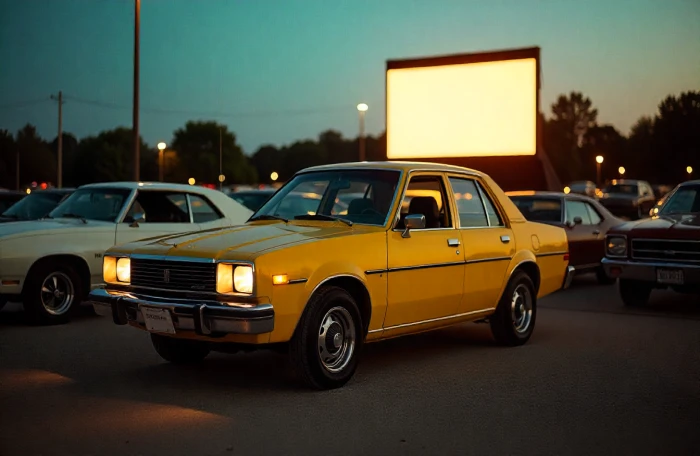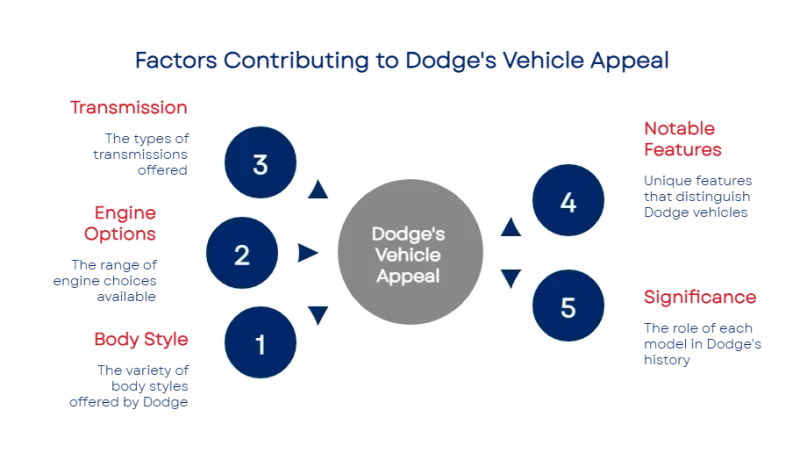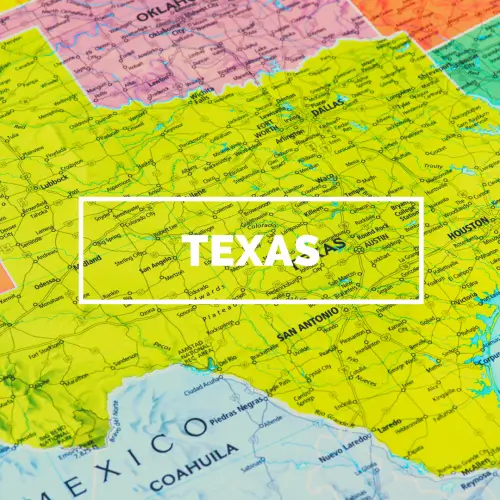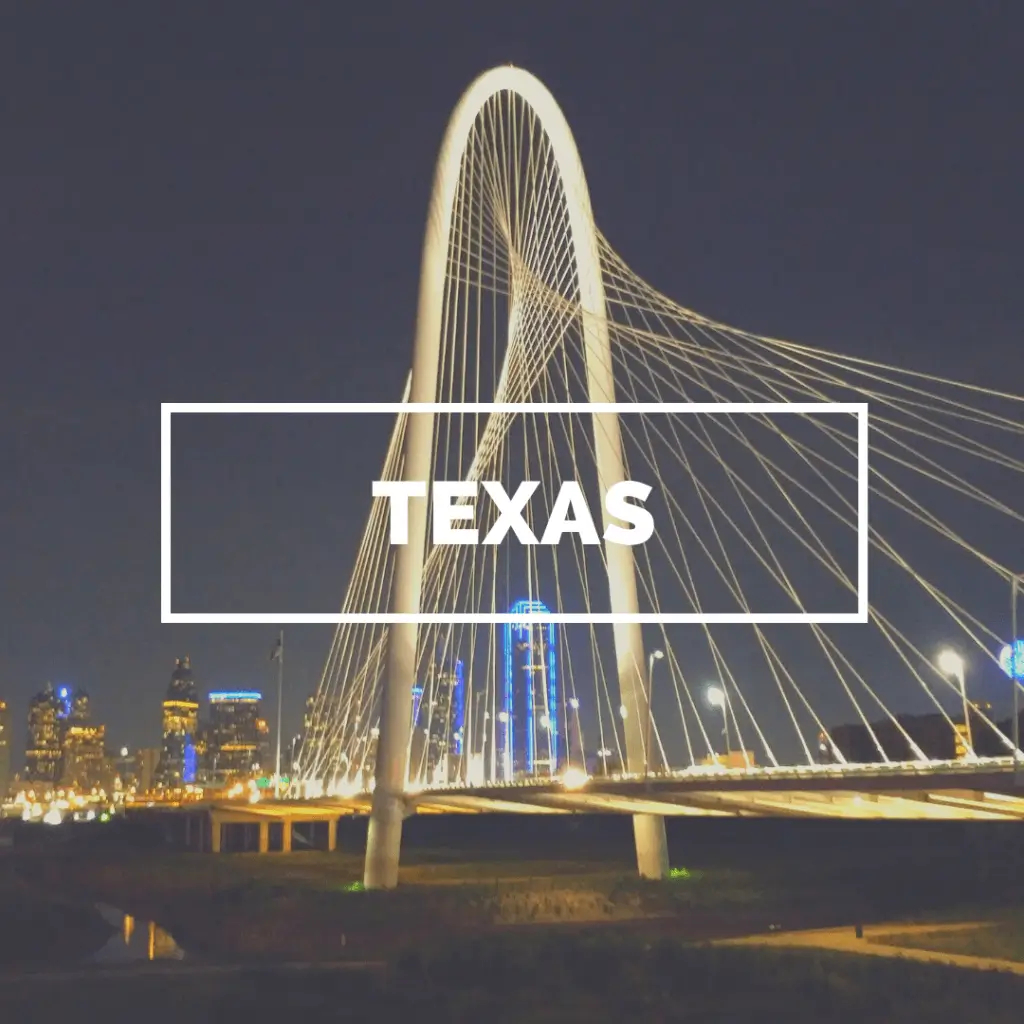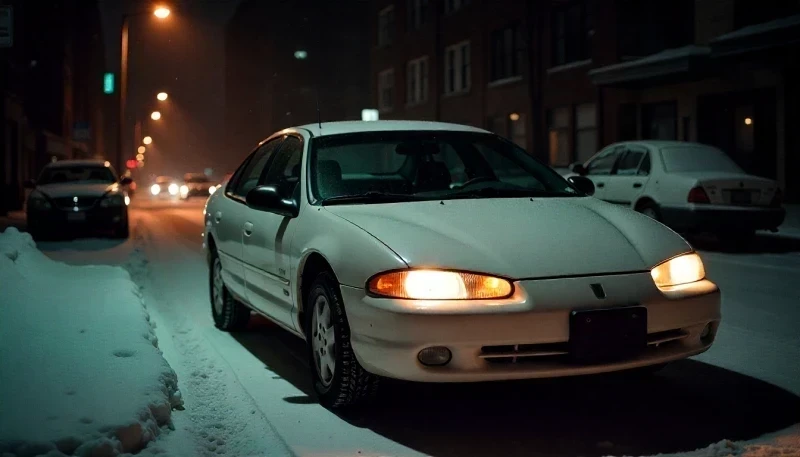
1990s Dodge cars delivered serious performance and style, and some of them are now worth more than you might expect.
That decade saw the Caravan becoming one of the best-selling minivans. But it was just one part of a larger shift. Throughout the 1990s, Dodge vehicles began to break away from the boxy, fuel-focused look of the ‘80s. Instead, they embraced bold styling, stronger engines, and aggressive design features that set a new tone for the brand.
This wasn’t a surface-level update. Dodge started building cars that felt powerful and looked modern, from the unmistakable V10-powered Dodge Viper to the aerodynamic shape of the Intrepid. Even practical models like the Stratus and Shadow received sleeker designs and better handling.
Today, the legacy of 1990s Dodge cars is more relevant than ever. Some models, like the first-generation Dodge Viper, are quickly gaining value in collector markets. Others, like the Dodge Stealth or Grand Caravan, are quietly gaining appreciation thanks to their design history and engineering.
If you're considering restoring a classic Dodge or exploring vintage models for long-term value, this decade offers plenty of options. Let’s explore what made these cars stand out and which ones are still worth your time and money.
What You’ll Learn
How Dodge blended performance and style during the 1990s
Which 1990s Dodge cars defined the decade
Which 1990s Dodge cars are heating up in the collector market
Overview
The 1990s saw a significant shift in Dodge's automotive design and marketing strategy, transforming it from a purveyor of practical vehicles to a brand known for both style and performance, with models ranging from family-oriented minivans to high-performance sports cars. This transformation caters to a wide array of automotive interests, whether it's for daily commuting, family transport, or collector value.
Here's a more detailed breakdown:
Design Revolution
Dodge transitioned from boxy, fuel-efficient designs to sleeker, bolder styles with curved body panels and cab-forward architecture, reshaping the brand's visual appeal.
Mass Market Models
Practical yet stylish models like the Stratus, Neon, and Caravan offered a blend of functionality and modern design, catering to everyday drivers and family needs.
Performance Vehicles
Iconic vehicles like the Dodge Viper showcased Dodge's focus on powerful engines and aggressive styling, attracting enthusiasts and collectors.
Trucks and SUVs
The introduction of the Dodge Ram and Durango catered to the rising demand for larger, more versatile vehicles, expanding Dodge's presence in these market segments.
Brand Identity
Marketing slogans and design choices aimed to redefine Dodge's image as a confident, American brand with a focus on dependability and emotional connection.
Other Notable Considerations:
Collector Market: Some 1990s Dodge models are increasing in value among collectors, making them worthwhile for restoration or investment purposes.
How 1990s Dodge Cars Marked a Design Shift
To understand the impact of 1990s Dodge cars, it helps to compare them to the models that came before. In the 1980s, many Dodge vehicles focused on function. The styling leaned conservative, with boxy shapes, compact interiors, and an emphasis on fuel economy.
That changed in the 1990s. The Dodge brand began moving toward sleeker, bolder designs. Curved body panels, wide stances, and cab-forward architecture became a signature across the Dodge lineup. This wasn’t just about keeping up with design trends. It was a strategic shift. Dodge aimed to create an emotional connection for drivers behind the wheel.
The Dodge Viper concept, introduced in 1989 and launched in 1992, showed how far the company was willing to go. It had an 8.0-liter V10 engine and no exterior door handles or side windows. It was raw and loud. And people loved it. On the family side, even the Dodge Intrepid and Dodge Caravan got aerodynamic profiles and stronger road presence.
In short, Dodge started building cars that were both smart and emotional. The 1990s were about proving that style, power, and practicality could all live in the same vehicle.
Dodge’s 1990s Design Revolution
Many Dodge models from this decade featured wide grilles, dramatic curves, and a more planted stance. The switch to cab-forward design, where the windshield is pushed forward and the wheels sit near the corners, made interiors roomier. It also gave exteriors a sleek, aerodynamic profile.
The Dodge Intrepid, Stratus, and Neon led the charge, showing that even family sedans and compact cars could look modern and move with purpose.
This shift matched Dodge’s growing confidence. The brand’s tone was changing, too. The Dodge slogan “The New Dodge” first appeared in 1992.
Design wasn’t about looks alone. It was also part of a broader effort to give Dodge a stronger emotional presence on the road and in the market.
Everyday Heroes: Dodge’s Mass Market Models
Beyond performance icons, Dodge's 1990s lineup featured several mass-market models that combined practicality with distinctive design. These vehicles played a significant role in shaping the brand's identity during the decade.
Dodge Stratus (1995–2000)
Body Style: 4-door sedan
Engine Options: 2.0L I4, 2.4L DOHC I4, 2.5L V6
Transmission: 5-speed manual or 4-speed automatic
Notable Features: Cab-forward design, spacious interior, and a balance between performance and comfort
Significance: The Dodge Stratus replaced the Spirit and Dynasty, offering a modern take on the mid-size sedan segment
Dodge Neon (1995–1999)
Body Style: 2-door coupe and 4-door sedan
Engine Options: 2.0L SOHC I4, 2.0L DOHC I4
Transmission: 5-speed manual or 3-speed automatic
Notable Features: Affordable pricing, sporty handling, and availability of the ACR performance package
Significance: The Dodge Neon appealed to younger buyers seeking a fun-to-drive compact car.
Dodge Avenger (1995–2000)
Body Style: 2-door coupe
Engine Options: 2.0L I4, 2.5L V6
Transmission: 5-speed manual or 4-speed automatic
Notable Features: Sleek styling, comfortable ride, and available V6 power
Significance: The Dodge Avenger filled the niche for a stylish and affordable coupe in Dodge's lineup.
Dodge Shadow (1987–1994)
Body Style: 3-door and 5-door hatchback, 2-door convertible
Engine Options: 2.2L I4, 2.5L I4, 3.0L V6
Transmission: 5-speed manual or 3-speed automatic
Notable Features: Versatile body styles, turbocharged engine options, and affordability
Significance: The Dodge Shadow offered a range of options for budget-conscious buyers seeking practicality and performance.
Dodge Spirit (1989–1995)
Body Style: 4-door sedan
Engine Options: 2.5L I4, 3.0L V6
Transmission: 5-speed manual or 3-speed automatic
Notable Features: Spacious interior, smooth ride, and optional V6 power
Significance: The Dodge Spirit served as a reliable family car with a focus on comfort and value.
Dodge Dynasty (1988–1993)
Body Style: 4-door sedan
Engine Options: 2.5L I4, 3.0L V6, 3.3L V6
Transmission: 4-speed automatic
Notable Features: Traditional styling, comfortable seating, and a smooth ride
Significance: The Dodge Dynasty catered to buyers seeking a classic full-size sedan experience.
Dodge Intrepid (1993–1997)
Body Style: 4-door sedan
Engine Options: 3.3L V6, 3.5L V6
Transmission: 4-speed automatic
Notable Features: Cab-forward design, spacious interior, and advanced safety features
Significance: The Dodge Intrepid showcased Dodge's commitment to innovation in design and engineering.
Dodge Caravan / Grand Caravan (1990–1999)
Body Style: Minivan
Engine Options: 2.5L I4, 3.0L V6, 3.3L V6, 3.8L V6
Transmission: 3-speed or 4-speed automatic
Notable Features: Versatile seating, sliding doors, and family-friendly amenities
Significance: The Dodge Caravan and Grand Caravan set the standard for family transportation, becoming synonymous with the minivan segment.
Dodge Dakota (1987–1996)
Body Style: 2-door and extended cab pickup
Engine Options: 2.5L I4, 3.9L V6, 5.2L V8
Transmission: 5-speed manual or 4-speed automatic
Notable Features: First mid-size pickup with available V8, versatile configurations
Significance: The Dodge Dakota bridged the gap between compact and full-size pickups, offering a unique option in the Dodge lineup.
Restoring Your 1990s Dodge
Reviving Classic Dodges: Restoring a 1990s Dodge is rewarding. For Vipers, focus on V10 maintenance ($2,000–$5,000) and source parts from Viper Owners Association forums. Neons need suspension upgrades ($500–$1,000) for ACR-like handling. Refresh Stratus interiors with OEM upholstery ($400–$800). Protect paint with ceramic coating ($1,000). Ship your restored Dodge with AmeriFreight’s classic car shipping for safe, enclosed transport.
The Rise of Dodge SUVs and Trucks
As American drivers shifted toward bigger, more versatile vehicles, Dodge moved quickly to meet demand. The 1990s saw the Dodge brand push into the growing SUV and truck markets with bold designs and performance-focused engineering.
Dodge Durango (1998–1999)
Segment: Mid-size SUV
Engine Options: 5.2L V8, 5.9L V8
Drive: Rear-wheel or 4WD
Significance: The Dodge Durango marked Dodge’s serious entry into the SUV space. It offered three-row seating, truck-like towing capacity, and aggressive styling — everything families and outdoor enthusiasts wanted in one vehicle. By 1999, it became one of the most in-demand Dodge models in the lineup.
1994 Dodge Ram
Segment: Full-size pickup truck
Engine Options: 3.9L V6, 5.2L V8, 5.9L V8, Cummins 5.9L I6 (diesel)
Drive: RWD or 4WD
Notable Feature: Signature big-rig front grille
Significance: The 1994 redesign changed what people expected from trucks. The new Dodge Ram introduced a muscular, high-stance body with a powerful presence. It helped separate Dodge from its competitors and boosted sales dramatically. Today, its legacy continues under the Ram Trucks brand.
While the Dodge Dakota had already introduced V8 power in a mid-size body, the Ram and Durango showed that Dodge vehicles could be both practical and bold. These models helped grow the Dodge lineup and win over buyers who needed more than a family car—they needed power and utility.
Maintenance Tips for 1990s Dodges
Keeping Your Dodge Running Strong: 1990s Dodges face electrical issues (Stealth wiring, $300–$600) and Caravan transmission wear ($1,000–$2,000). Viper V10s need regular oil changes ($100–$200). Upgrade Neon brakes for better stopping ($400–$800). Store in dry garages to prevent rust. Relocate your Dodge with AmeriFreight’s enclosed transport to protect its iconic style during transit.
Brand Identity and Legacy
In the 1990s, the Dodge brand didn’t just evolve its cars; it reshaped its entire personality. This decade marked the rise of a new, more confident attitude.
Before this shift, Dodge had long been viewed as a practical but less exciting choice. But by the mid-90s, marketing slogans like “The New Dodge” started showing up in ads, reflecting a stronger voice and a bolder image.
This was more than just clever branding. It also reflected the company’s deeper strategy. Dodge wanted to build cars that felt expressive, modern, and proud to be American. The Dodge Charger, though not sold as a production model in the ‘90s, began building buzz through concept vehicles that would later influence the 2000s revival.
The brand’s origin story still mattered too. The Dodge brothers, John and Horace, built their first cars after parting ways with Henry Ford, deciding to create their own line of rugged, powerful machines under the Dodge Brothers Company. That legacy of independence and innovation remained at the heart of Dodge’s identity through the 1990s.
By the end of the decade, Dodge had gone from safe and sensible to bold and emotionally driven. Its reputation wasn’t just tied to affordability; it was becoming known for muscle, confidence, and character.
2025 Collector Market Trends
Rising Value of 1990s Dodges: In 2025, 1990s Dodge models like the Viper RT/10 ($50,000–$100,000) and Stealth R/T ($15,000–$30,000) are surging in collector markets, per Hagerty. Neon ACRs are also gaining traction for their SCCA racing history. Check #DodgeViper on X for auction trends. Preserve your investment with AmeriFreight’s enclosed auto transport for secure delivery to car shows or collectors.
In-Depth Examination: Secure Transport of a 1996 Dodge Viper GTS from Midwest to Southwest
AmeriFreight orchestrated the enclosed auto transport for a pristine 1996 Dodge Viper GTS, a quintessential 1990s Dodge Viper shipping example, from Illinois to Arizona for an investor eyeing a collector's showcase. Priced at $75,000 with its original blue-and-white stripes and 8.0L V10 engine, the owner demanded top-tier protection via enclosed transport for Dodge Viper to mitigate risks from debris on the 1,700-mile route.
Obstacles like the Viper's wide body and low stance required custom ramps and air-suspension trailers. Our specialists completed the haul in five days amid variable weather, delivering it unscathed for immediate appraisal. This instance spotlights the necessity of expert 1990s Dodge cars auto transport for upholding the performance and style of these rarities.
Owner Victories: Celebrated Deliveries of Iconic 1990s Dodge Models
Delve into these triumphant tales from clients mastering 1990s Dodge Stealth transport and similar ventures with AmeriFreight:
Marcus B., Viper Aficionado in Nevada: Post-purchase of a 1992 Dodge Viper RT/10, Marcus arranged enclosed classic Dodge Viper shipping over 2,000 miles from New York. "Flawless execution—my raw V10 beast arrived showroom-fresh, evoking 90s muscle glory."
Nina R., Neon Enthusiast from Georgia: Nina shipped her modified 1995 Dodge Neon ACR for a rally event, relying on secure 1990s Dodge Neon transport services across 800 miles. "Budget-friendly and protective; no issues with the sport compact's custom suspension."
Kyle S., Stealth Owner in Oregon: For his 1994 Dodge Stealth R/T Turbo, Kyle chose door-to-door 1990s Dodge cars auto transport interstate. "Timely and damage-free—preserved the twin-turbo AWD prowess perfectly."
These narratives affirm our prowess in Dodge Viper auto transport, resonating with searches for "shipping 1990s Dodge performance cars."
Preparation Pointers: Optimizing Your 1990s Dodge for Hassle-Free Shipping
Maximize safety in 1990s Dodge Viper shipping with these actionable insights:
Detailed Inspection: Examine your Dodge Stealth for fluid levels and body integrity; photo-document for insurance during enclosed transport for Dodge Viper.
Accessory Safeguards: Detach or secure spoilers and mirrors on Neon models to avert shifts in 1990s Dodge Neon transport.
Battery and Fluids: Disconnect batteries and minimize fluids in non-operational classics for compliant 1990s Dodge Stealth transport.
Coverage Choices: Upgrade insurance for full replacement value, vital for high-end 1990s Dodge cars auto transport.
Booking Wisdom: Plan 3-5 weeks ahead, dodging peak seasons for cost-effective Dodge Viper auto transport.
Drawn from queries like "tips for transporting 1990s Dodge cars," these ensure your stylish performer travels securely.
Expense Analysis 2025: Variables Shaping 1990s Dodge Shipping Rates
Amid 2025's stable fuel landscape, costs for 1990s Dodge cars auto transport vary by specifics. Open carriers average $0.40-$2.00 per mile, but enclosed options for Dodge Viper auto transport hit $1.50-$2.00 per mile, ideal for preserving paint on 1,000-mile trips ($1,100-$2,000 total).
Anticipate $800-$1,500 baseline; leverage quotes for "classic Dodge shipping costs 2025" precision.
Protocol Framework: Essential Safeguards and Rules for Vintage Dodge Moves
Navigating 1990s Dodge Viper shipping demands adherence to key U.S. standards:
FMCSA Oversight: Carriers must hold USDOT certification; confirm for legitimate 1990s Dodge Stealth transport to evade penalties.
Coverage Thresholds: Require $1M liability minimum, with extras for classics over 25 years old in enclosed transport for Dodge Viper, per DOT exemptions.
Fastening Guidelines: Employ wheel chocks and soft ties under FMCSA rules to stabilize low-profile models during 1990s Dodge Neon transport.
Eco Mandates: 2025 EPA favors low-emission haulers; opt in for sustainable 1990s Dodge cars auto transport.
Import Notes: 25+ year vehicles bypass some EPA/DOT for personal use, easing Dodge Viper auto transport from abroad.
These align with "safety regulations for vintage car transport US 2025" emphases, minimizing hazards.
Landscape Overview: 2025 Dynamics in 1990s Dodge Sector and Logistics
The classic car arena in 2025 thrives, with U.S. market growth at 8.82% CAGR to $24.78B by 2032, spotlighting 1990s Dodge Viper shipping surges as values rise 10-15% for Vipers ($50,000-$90,000 range). Nostalgia fuels demand for Stealth and Neon, up 12% in auctions.
Enclosed 1990s Dodge Stealth transport requests climb 20%, with tech like GPS trimming times 15%. Green incentives cut fees 5-10% for eco-haulers in 1990s Dodge Neon transport. Key regions: West Coast events drive cross-nation 1990s Dodge cars auto transport at $1.00-$1.50/mile. Amid Boomer transitions, AmeriFreight excels in this bullish Dodge Viper auto transport market.
Final Thoughts
The 1990s reshaped the way drivers saw the Dodge brand. From bold redesigns like the Dodge Ram to everyday legends like the Caravan, Dodge proved it could build vehicles that delivered both style and substance.
Whether you're searching for a rare Dodge Daytona, restoring a clean Stratus sedan, or collecting a well-preserved Dodge Neon, this era offers more than nostalgia. It’s a decade where design, innovation, and emotional appeal came together, and that makes these cars more valuable than ever.
Cultural Impact in 2025
Dodge’s 1990s Legacy Today: In 2025, 1990s Dodges shine in pop culture, with Vipers in video games and Neons trending on X via #DodgeNeon for their tuner appeal. Stealths draw crowds at SEMA for their Mitsubishi roots. Their bold designs resonate with younger enthusiasts. Showcase your Dodge at events with AmeriFreight’s car show transport, ensuring pristine delivery with AFTA gap coverage.
Ready to Ship Your 1990s Dodge? AmeriFreight Auto Transport Can Help
Whether you’re restoring a Dodge Viper or relocating a well-kept Dodge Caravan, protecting your vehicle during transport is critical. At AmeriFreight Auto Transport, we offer services tailored for classic and collectible cars, including enclosed shipping and top-load placement to help reduce the risk of exposure to road debris, weather, and other potential damage. Learn more about protecting long-term value with classic car shippers and see what to expect when transporting your classic car. For low-clearance or rare models like the Dodge Stealth, top-load placement adds an extra layer of safety.
Ready to ship? Reach out today for a quote and speak with our knowledgeable team of customer service agents who understand the value of 1990s Dodge cars.
Sourcing 1990s Dodges in 2025
Finding Your Dodge Classic: Hunt 1990s Dodges on Bring a Trailer, Cars.com, or Hemmings. Vipers start at $40,000 (projects) to $100,000 (mint). Neons and Avengers range from $5,000–$15,000. Search #DodgeForSale on X for deals. Verify VINs for authenticity. Transport your purchase with AmeriFreight’s classic car shipping, offering secure delivery and gap coverage.
Frequently Asked Questions (FAQs)
What are the names of some Dodge cars?
Popular 1990s Dodge models include the Dodge Caravan, Dodge Neon, Dodge Dakota, and Dodge Viper. The decade’s Dodge lineup also featured the Stratus, Intrepid, and Dodge Monaco.
What cars did Dodge make in 1994?
In 1994, Dodge introduced models like the Dodge Ram, Spirit, Shadow, Caravan, and Dakota. That year also saw Dodge vehicles with updated engines and expanded trims for performance and utility.
What Dodge cars are not made anymore?
Models like the Dodge Omni, Dodge Aries, Dodge Colt, and Dodge Mirada were discontinued before or during the 1990s. These cars lacked modern front suspension setups and didn’t match the brand’s growing production capacity or new design goals.
What are the models of the 1990 Dodge Ram?
The 1990 Dodge Ram came in 150, 250, and 350 trims, built as full-size vans and trucks. They offered several engine options and were known for strength and long-term use in small town fleets and commercial jobs.


